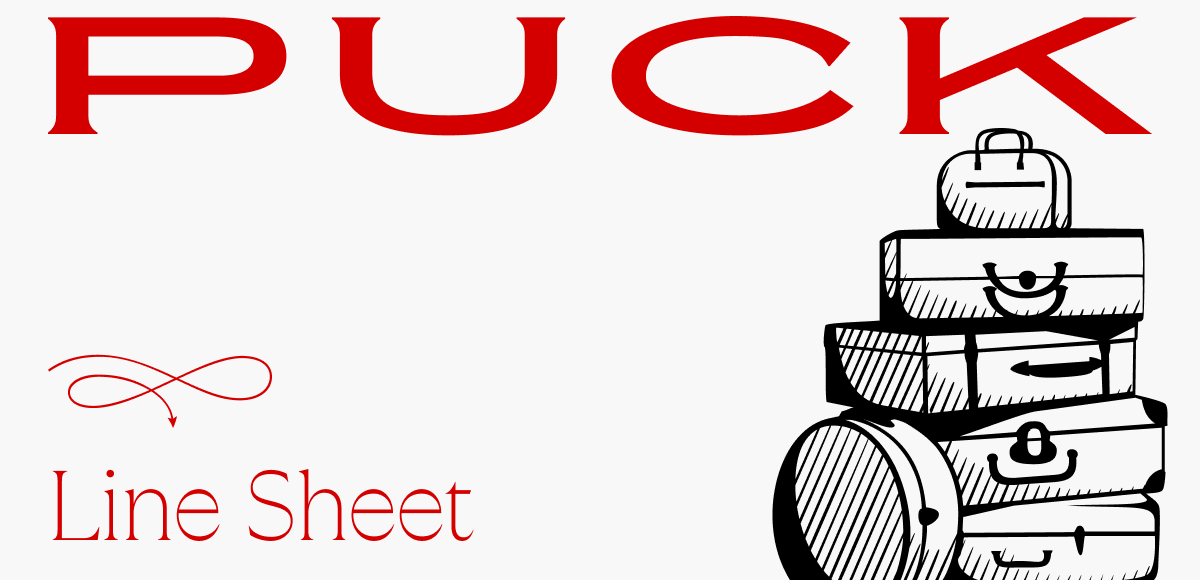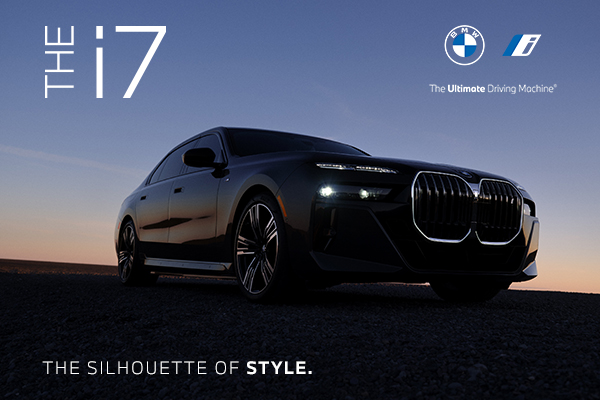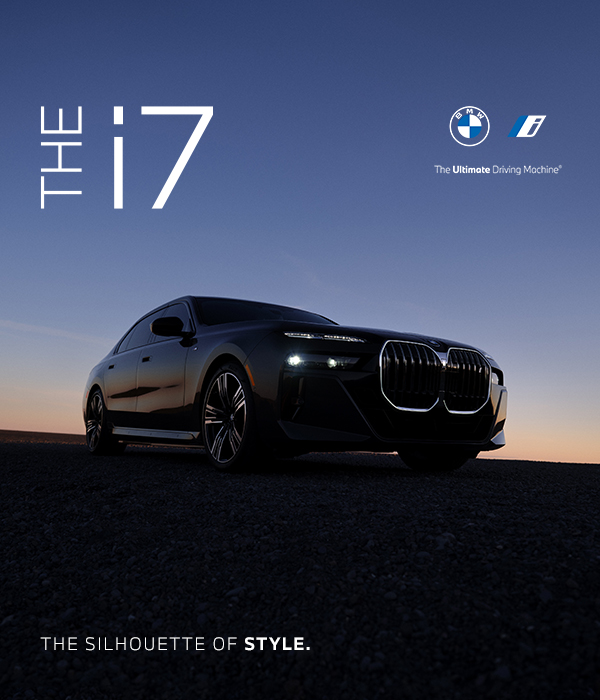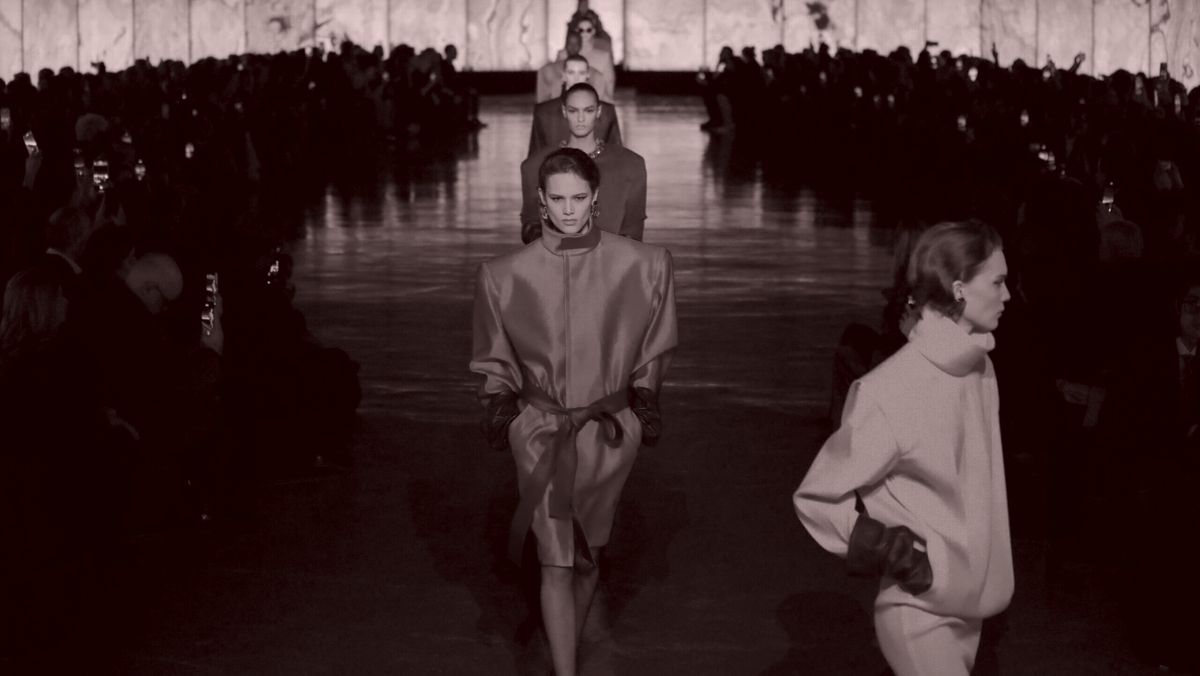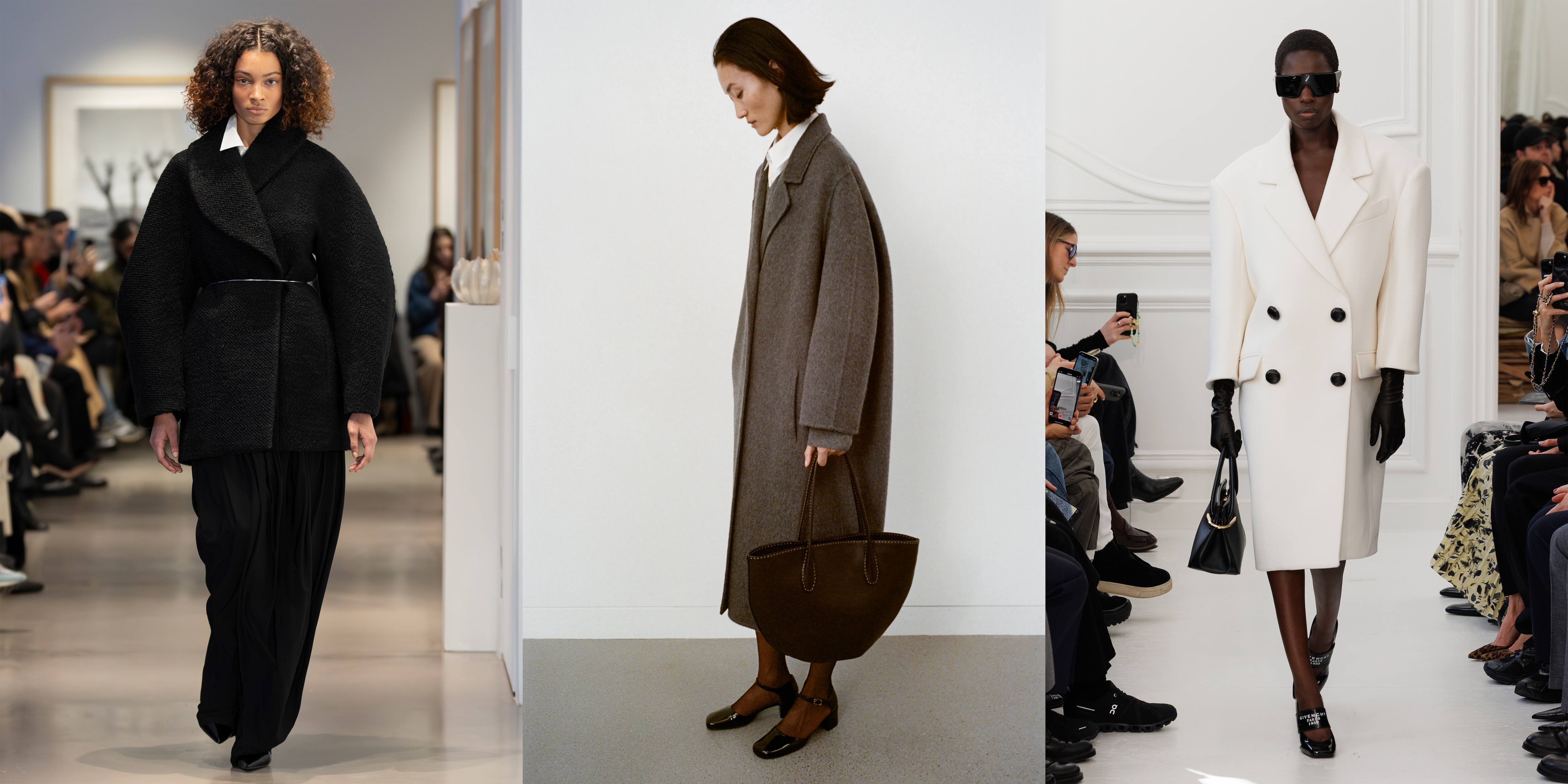Hi, and welcome back to Line Sheet. It’s cold in Paris, but I was happy to be here for a few
days post–Fashion Week to properly catch up with people, and also get an on-the-ground read on the Demna-Gucci news. (My précis, exclusive to Inner Circle members, is here.)
Most people remain stunned and confused. There are others who know Demna and believe he is more than capable of expanding his purview. Also, frankly,
Kering had no other choice. (An unproven designer was too big of a risk, and there were no other proven creative directors available—or interested.) Investors, who may be less understanding of the curious machinations of the luxury industry, reacted poorly, with Kering shares down about 10 percent on the news. The company’s market cap is now just over $27 billion, down from $115 billion in August 2021.
The sizable loss of shareholder value is concerning, and it’s going to take
time to turn things around. Much more time, in fact. While the classic Gucci product (carryover, as they call it in the biz) is improving, the big, new idea won’t materialize for another year. Remember, Demna will be working at Balenciaga until July.
You can read more about how Kering came to the Demna decision in yesterday’s issue of Line
Sheet. Today, I’ve included some of your comments on Gucci and the other big announcements of the week. Luckily, Sarah “SShapiro@puck.news” Shapiro is here to distract us with the week in shopping and trends, including notes on the return of real fur, the Marant hat phenomenon, and what’s up with Shopify’s curious decision to leave the Yeezy-swastika merch up as long as they
did.
My micro-retail report from Paris: The city is overrun with vintage shops, the Bode store is gorgeous and a necessary stop (the nicest of the three so far), and Galeries Lafayette’s renovated women’s building on Haussmann is giving Le Bon Marché a serious run for its money. (Visit Floor 1.)
Mentioned in this issue: The Row, Ashlyn, Stella McCartney, Givenchy, Sarah Spellings, ’80s power coats, Fendi, Alaïa, Miu Miu, Rickie De Sole,
Isabel Marant, Khloé Kardashian, Good American, Emma Grede, Kanye West, Shopify, Harley Finkelstein, boom boom aesthetic, and many more…
|
|
|
A MESSAGE FROM OUR SPONSOR
|
Get ready for a new era of glamour. The 100% electric BMW i7 is always show-stopping. Learn more at
BMWUSA.com.
|
|
|
Three Things You Should Know…
|
- Making
Good American… something again: Khloé Kardashian’s denim brand, Good American, which began its journey in the world as a premium brand at Nordstrom, is now expanding into 36 Macy’s locations, en route to almost 80 by the end of the year. This isn’t necessarily good news, of course. The pivot to mid-market is part of a larger upheaval: Layoffs affecting around 20 percent of
the workforce; 30 percent sitewide sales on the company’s D.T.C. channel; and its lost distribution within Nordstrom’s vendor matrix. Good American needs to move a lot more inventory and open more wholesale accounts. (A spokesperson for the company didn’t respond to a request for comment.)
Sources familiar with the business acknowledged the headwinds, but insisted the brand might be turning a corner under C.E.O. Emma Grede, the data-driven executive who helped
mastermind Skims’s success and is likely recalibrating product mix and inventory levels to align with current denim preferences and sales trends. That said, given G.A.’s struggle to capitalize on key trends last season like barrel and wide leg styles (the brand is primarily known for skinny and stretch denim), she certainly has her work cut out for her. —Sarah Shapiro
- Sperry gets decked out: The last time the humble boat shoe—with its
combination of old-school preppy and hint of nerdy cool—enjoyed a major trend cycle was in 2007. But the boat shoe is once again on everyone’s mind, with the most popular iterations coming from Bally and
Miu Miu. Perhaps this was all foreshadowed last July, when the U.S. Olympic team in Paris donned Ralph Lauren’s patriotic red, white, and blue boat
shoes. Unsurprisingly, Sperry, the heritage boat shoe brand, is going all in on the trend.
Its collab with Canadian retailer Aritzia sold out in five hours, prompting Sperry to push up their D.T.C. launch by two weeks. (It dropped today.) Sperry’s success follows its acquisition, last year, by
Authentic Brands Group, which brought in the Aldo Group as operating partner. Part of their plan has coalesced around monthly high-profile collabs with Nordstrom, and, coming soon, the trendy L.E.S. shop Colbo and Todd Snyder, which may help nudge Sperry’s preppy staple into a must-have fashion item. This summer, the yacht club aesthetic will also be turning up in Sperry’s classic
CVO Keds-style sneakers. —Sarah Shapiro
- Shopify vs. Yeezy: I’m still hearing some frustrated chatter from Shopify partners over the platform’s sluggish response to Kanye West promoting swastika-adorned t-shirts on his Yeezy store back in February. Shopify waited some 48 hours before taking down the store, a response that was
perceived by some as delayed and dismissive compared to similar incidents in the past. After the Capitol riot on January 6, for example, the platform removed certain insurrectionist-affiliated stores within 24 hours. Back then, according to a source present at a corporate town hall, Shopify president Harley Finkelstein was vocally furious about a Capitol rioter wearing a “Camp Auschwitz” t-shirt.
When questioned about the Yeezy incident on CNBC, Finkelstein
justified Shopify’s delayed removal by repeating, “Good process creates good outcomes.” But it’s unclear why so much process would have been necessary—as CNBC’s Sara Eisen pointed out, Shopify’s terms of service allow them to pull a website for any reason on the spot. The Yeezy store
would presumably have had a dedicated account manager, who should have been tracking the situation in real time. Anyway, the disappointed partners have yet to receive a response from Shopify, I’m told. This is all a notable departure from co-founder and C.E.O. Tobi Lütke’s statement in 2018, that “neutrality is not a possibility” when establishing guidelines against harmful products. (Shopify didn’t respond to requests for comment.) —Sarah Shapiro
|
|
|
News and notes on the latest fashion pendulum swings, plus a Paris Fashion Week
retrospective and some notable micro-trends.
|
|
|
I can’t stop thinking about how fashion keeps recycling itself, sometimes in the least expected ways. The
runway collections in Paris, for example, left me simultaneously nostalgic and intrigued by their gestures toward a return to 1980s opulence. It wasn’t just an aesthetic recycling, but rather a deliberate reinterpretation that feels oddly relevant. Designers seem to be extracting the essence of power dressing from the ’80s, updating the look and provoking the question: What are the possibilities for power dressing in 2025?
Take, for example, the revival of 1980s
power coats, part of the “boom boom aesthetic,” a term Emilia Petrarca and Sean Monahan have used to describe fashion’s new frontier of Gordon Gekko–style, greed-is-good chic. The thick wool statement outerwear, with oversize shoulders and lapels (perfect canvases for brooches and/or belts), has appeared at The
Row, Ashlyn, Stella McCartney, and Givenchy, as well as on the street (see The Cut E.I.C. Lindsay Peoples). And while this back-to-the-’80s moment resonates with current cultural and political shifts—Donald Trump, of course, remains the most emblematic expression of that decade—participation doesn’t signal political alignment. Even the one percent has its
ideological diversity, after all.
|
Photos: Courtesy of Ashlyn, Givenchy, and The Row
|
Outerwear, moreover, is one of the few fashion investments that consumers still consider worthwhile,
giving brands an opening to inch up their price points. The vintage inspiration creates ample resale shopping opportunities, too—don’t forget to check out the men’s section.
|
When WSJ’s Sarah Spellings
documented Gen Z’s growing appetite for fur in the vintage market, one furrier made the bold prediction that the look would make its runway return within two years. That prophecy actually materialized within two weeks—fur saw a 280 percent increase from the year before in runway looks for the Fall/Winter 2025 season.
|
|
|
A MESSAGE FROM OUR SPONSOR
|
Get ready for a new era of glamour. The 100% electric BMW i7 is always show-stopping. Learn more at
BMWUSA.com.
|
|
|
Paris Fashion Week delivered the proof with a mix of real and faux fur:
Fendi, The Row,
Alaïa, Miu Miu, and, most surprisingly, sustainability-minded Gabriela Hearst all showcased fur in their collections. Hearst’s version is already available for preorder on her site for $32,000. As designers often do with special pieces—and, in this case, it’s made from actual vintage stock—preorder allows the brand to manage inventory, and not make a size that won’t eventually sell.
Fendi, of course, began as a fur and leather shop in 1925,
and has maintained a consistent presence ever since. But fur’s growing appearance elsewhere signals a dramatic cultural pivot after a seismic shift away from the material in recent years. Between 2017 and 2021, we witnessed a domino effect of antifur commitments across luxury fashion, coinciding with #MeToo and D.E.I. initiatives. PETA declared victory after Gucci banned fur in 2017, which triggered Burberry, Prada, Versace, and major retailers like Saks, Nordstrom, and
Macy’s/Bloomingdale’s to follow suit. Department stores shuttered their once-thriving fur salons as global production plummeted. According to the Fur Free Alliance, fur production dropped 85 percent over the past decade, from 140 million animals in 2014 to roughly 20 million in 2023.
When I reached out to multiple department stores that had previously closed their fur departments, none would comment on whether they plan to reverse course. This seemed like a display of
strategic indecision—or careful calculation of customer sentiment. Rickie De Sole, Nordstrom’s fashion director, told me that the retailer plans to buy the trend for outerwear (citing “fuzzy textures,” shearling, and faux fur) and accessories (expect Miu Miu stoles to be replicated by many high-street brands come fall). De Sole also cited fur as an indicator of “maximalist opulence” trends gaining ground over luxury minimalism. Boom boom, indeed.
There’s a
compelling economic calculus for luxury brands here, too. Fur’s premium price points are potential revenue buffers against ongoing economic uncertainty. It’s too early to say whether all of this represents a genuine longer-term shift, or just another swing of the fashion pendulum. There’s also ongoing debate over whether faux or real fur is “better” (environmentally, or otherwise) given that the faux version contains microplastics.
|
Halfway into her Paris trip, Lauren messaged me about the remarkable proliferation of
Marant hats from the quintessentially Parisian brand’s still relatively new menswear line. The guys in Paris are wearing these the way they wear Alo Yoga baseball caps in L.A.: constantly, with an almost unhinged zeal. It’s interesting that Isabel Marant would be the brand to benefit from late-stage merch consumption: Her wares, which never waver from her core bohemian-rock-star competency, don’t read as thirsty. Of course, the Marant logo is big stateside, too, at least with East Coast Gen
Zers out to redefine the meaning of preppy.
If you are confused by my use of preppy here, don’t worry—at first, I was too. But my tween daughter has helped me understand that the ’80s Greenwich-style prep has been replaced by vibrant colors, maximalist accessories, and status-signaling logos—less old school Ralph, more TikTok-friendly brightness. Marant’s boho chic aesthetic, with its playful patterns and French girl insouciance, hits that sweet spot. (There is also
this TikTok moment…) According to one observant Gen Z watcher, university students are very into the Marant sweatshirts, too.
|
|
|
For Isabel Marant, ubiquity is a good thing. (Montefiore Investment acquired a controlling 51 percent
position in the business, in 2016, and ran an unsuccessful sale process a few years back.) The line went from being an IYKYK cool French girl brand to an It-label best known for a curious wedge sneaker. In the past decade, they’ve spent time increasing global distribution, and ensuring that they sell far more than that shoe. Now, the kids want it. And, wouldn’t you know, the wedge sneaker is getting hot again.
When nostalgia hits the runway, the ripple effects in the resale market are
immediate and intense. Case in point: Following Chloé’s Fall/Winter 2025 show, an insider from The RealReal shared with me that Paddington bag sales surged 48 percent week over week, and that searches are up 6x over a year ago. Demand is up (if you have one and are looking to sell, now would be the time) as the average selling price has doubled since last year. In fact, searches for all
Chloé bags have risen 14 percent.
Finally, a super-rounded heel is making a comeback. Perhaps the Phoebe Philo influence is strong, or a high heel is needed to go with the ladylike pencil-skirt-and-oversize-coat look. Lauren spotted this heel from Courrèges, and, of course, there are now countless versions of
this Loewe toy stiletto, as well as Amina Muaddi’s version and Alaïa’s patent slingback. Post-pandemic, consumers are reluctant to return to anything that isn’t a comfortable shoe, and the wider toe box of a round
toe gives you some wiggle room there.
|
The
Week in Feedback: Vitale, Saks, & The Row
|
Re:
Dario Vitale at Versace: “He’s been at Miu Miu for 10 years. But Miu Miu really took off in the past three, after Miuccia brought in [stylist] Lotta Volkova. It’s just something to think about.” —An executive
Re: The
Saks Global PFW push: “[Chairman] Richard Baker and his wife going to fashion shows in Paris… not a good look, given the situation.” —A vendor
Re: The Gucci employee reaction: “Half are disgusted. Half liked it.” —An
insider-insider
Re: The recent episode of Fashion People on The Row: “As a European, I would never spend money on The Row… if I had the money. Way too basic, as you say. Phoebe Philo, on the other hand, is sexy. I think you are right about the impact of
art/humanities.” —A listener
Re: The Rent the Runway stock decline: “The stock was so low the Nasdaq made them do a combo (the opposite of the split). It was 10:1. So the stock is actually trading at $0.40, which is 0.1 percent of the I.P.O. It’s down 99.9 percent, not 99 percent.” —A concerned investor
|
Have a great weekend,
Lauren
P.S.: We are using affiliate links because we are a
business. We may make a couple bucks off them.
|
|
|
Need help? Review our FAQ page or contact us for assistance. For brand partnerships, email ads@puck.news.
You received this email because you signed up to receive emails from Puck, or as part of your Puck account associated with . To stop receiving this newsletter and/or manage all your email preferences, click here.
|
Puck is published by Heat Media LLC. 107 Greenwich St, New York, NY 10006
|
|
|
|
